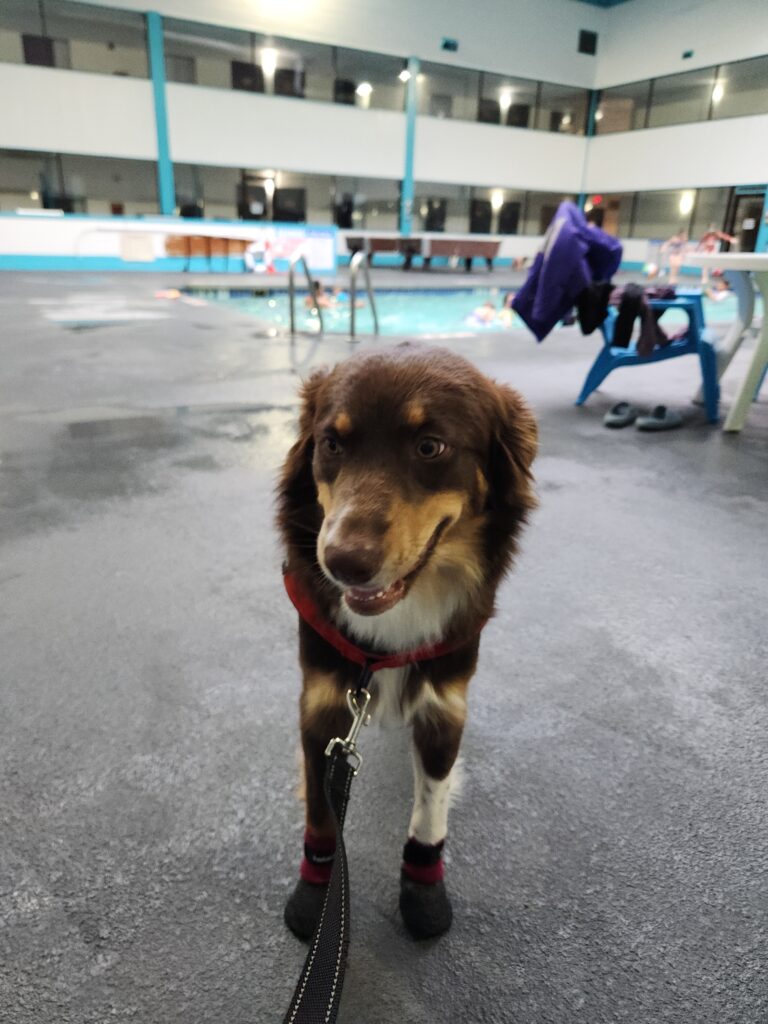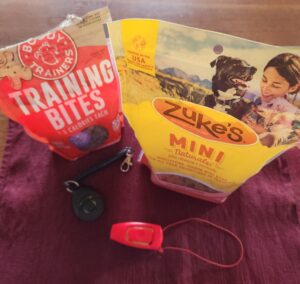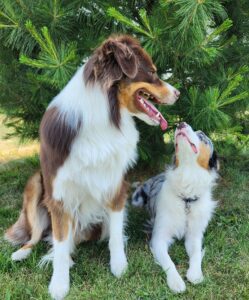Every time you take your service dog out in public, you are shaping perceptions about service dogs as a whole. It’s important to handle public interactions in a way that ensures a positive experience for you, your dog, and others. Not everyone you encounter will be a dog lover, and some may have concerns about dogs in public spaces. Being prepared to de-escalate situations and educate others can help avoid conflicts and make public outings smoother.
Navigating Public Spaces
When bringing your service dog into public places, your primary goals should be:
- Ensuring your dog does not interfere with others and stays out of the way.
- Keeping your dog safe, calm, and well-behaved to prevent disruptions.
To accomplish this, consider the following strategies:
- Leash Management: Keep your dog on a short leash, no more than a foot from you, so they remain close. This prevents people from stepping on them or invading their space. Service dogs should walk without pulling and typically stay on the left side, though situations may require them to switch sides for safety.
- Positioning: Your dog should be placed strategically to avoid unwanted attention. For example, in crowded hallways, positioning your dog between you and a wall can prevent strangers from reaching over to pet them or accidentally stepping on them.
- Focus Training: Teach your dog to synchronize their movements with yours and to check in with you regularly. Reinforce eye contact to prevent them from becoming distracted by people or objects. This also prevents the dog from sniffing at people, shelves, or food on the ground.
- Standing vs. Sitting: If you’re in a crowded space like a busy line, keeping your dog standing may be the safest option to avoid their paws getting stepped on. When sitting, ensure they do so as close to you as possible to avoid blocking pathways.
- Under-the-Table Training: When sitting at a restaurant, ensure your dog is fully tucked under the table to avoid blocking walkways and attracting unwanted attention. Keeping them compact and unobtrusive reduces complaints and potential conflicts.
Dealing with Business Owners and Employees
Despite legal protections, you may encounter resistance when entering businesses with your service dog. Here’s how to handle these situations effectively:
Let’s Imagine a Scenario: Denied Entry at a Store
You enter a supermarket with your service dog, and the greeter steps in front of you, blocking your way. How you handle this will impact not just your experience, but also future service dog teams.
- You become defensive: You argue that they have no right to stop you, raise your voice, and try to push past them. The situation escalates, a manager is called, and onlookers start filming. Your dog picks up on your stress, becomes anxious, and barks. The scene goes viral, painting service dogs in a negative light.
- You remain calm: You say, “I understand pet dogs aren’t allowed, but this is my service dog. She is trained to assist me and is legally allowed. I’d be happy to talk to a manager.” The greeter, seeing your composed demeanor, allows you through without further issue.
Let’s Imagine a Scenario: Dining in a Restaurant
You’re seated at the front of a restaurant, and your dog stretches out, partially blocking the walkway.
- You allow the dog to stay in place: Most people walk around and smile at your dog, but one patron complains to the manager, arguing that dogs in restaurants are unsanitary. Now, the manager has to choose between upsetting you or the other customer, potentially leading to restrictions for future service dog teams.
- You tuck your dog under the table: Your dog remains out of sight, and nobody complains. The manager doesn’t have to get involved, and the dining experience remains positive for everyone.
Anticipating Situations Before They Happen
Being proactive can help you avoid negative experiences. Consider the following common scenarios:
Let’s Imagine a Scenario: A Dog Lover Approaches
A well-meaning stranger sees your dog and excitedly rushes over, asking if they can pet them.
- You respond impatiently: Frustrated after answering the same question all day, you say, “You’re not supposed to pet service dogs,” and walk away, leaving the person feeling embarrassed.
- You educate politely: You step between them and your dog, smile, and say, “Thank you for asking, but my dog is working right now and shouldn’t be distracted. Have a great day!”
- You use it as a training opportunity: You say, “If you’d like, you can help me train my dog! If they stay seated, you can pet them. If they move, I’ll ask you to stop.” Explain how your dog likes to be petted (usually not over the head, so mention on the side of the body or the back). At the same time, you can treat your dog to reinforce the interaction as a positive experience and educate the person in a friendly way.
Conclusion
By handling public interactions with patience and preparation, you set a positive example for service dog handlers everywhere. Ensuring that your dog is well-behaved and unobtrusive will minimize conflicts and promote better understanding of service dogs in the community. With the right approach, you can create smoother experiences for both yourself and others while strengthening your service dog’s training and confidence.








